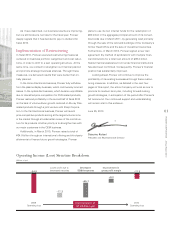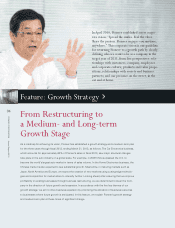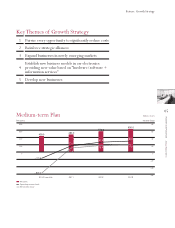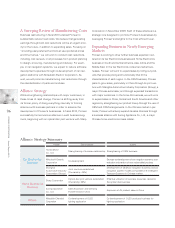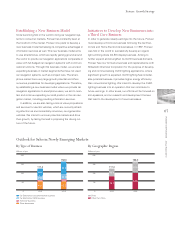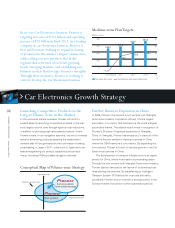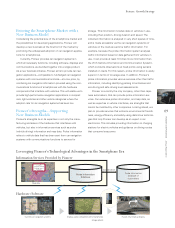Pioneer 2010 Annual Report Download - page 15
Download and view the complete annual report
Please find page 15 of the 2010 Pioneer annual report below. You can navigate through the pages in the report by either clicking on the pages listed below, or by using the keyword search tool below to find specific information within the annual report.
OLED technology has been used extensively in displays due to its thin, self-luminescent
planar elements. There are high expectations for OLED lighting technology because OLED
lighting will harness the physical properties of OLED to create new interior spaces illumi-
nated from entirely planar light sources—providing light that is gentle on the eyes. In con-
trast, incandescent bulbs or fluorescent lamps, which are widely available, provide only a
point or linear source of light. In addition, OLED lighting is an environmentally conscious
light source because it contains no substances of environmental concern, such as mercury.
In 1997, Pioneer successfully commercialized the world’s first OLED displays. Currently,
Pioneer is engaged in R&D on the following OLED lighting technologies: the element, man-
ufacturing process and panel development technologies, each honed through the mass
production of OLED displays. Through these activities, the Company aims to further expand
and strengthen its OLED business domains.
Going forward, Pioneer will collaborate with Mitsubishi Chemical Corporation in devel-
oping environmentally conscious technologies and further reducing OLED power consump-
tion. At the same time, the two companies will strive to develop products that can be
offered at more affordable prices through innovative technologies such as OLED manufac-
turing methods based on printing technologies.
Intellectual Properties That Support Business
Pioneer owns a large number of patents in such fields as navigation systems, optical discs,
and audio systems, and continuously endeavors to develop and file new patents. Pioneer
is also focusing on intellectual property activities overseas. The Company’s global applica-
tion rate* has surpassed 40%, roughly twice the average rate for all patent applicants.
In regard to patent rights that have been obtained, Pioneer chooses and implements
the optimum patent utilization method in each business from the following four catego-
ries: “exclusive-use,” “licensing,” “cross-licensing” and “technological appeal.” In this
manner, Pioneer utilizes patents in support of current and future business activities includ-
ing the strengthening of business alliances with other companies.
Looking ahead, Pioneer will continue promoting measures to strengthen intellectual
property activities, which involve creating intellectual property, obtaining intellectual prop-
erty rights and utilizing intellectual property, with a view to maximizing the benefits of
these strategic assets.
* The percentage of patent applications filed with the Japan Patent Office that were also filed
outside Japan.
Designed in collaboration with Uchihara
Creative Lighting Design Inc.
OLED lighting prototype
PIONEER CORPORATION Annual Report 2010
The optimal patent utilization method is determined based on research and analyses of Pioneer’s
business environment as well as the status of patents owned by the Company and its competitors.
Contributing to business
Exclusive-use
To ensure our
competitive advantage
Licensing
To obtain royalty income
Cross-licensing
To secure business options
Technological Appeal
Sales promotion featuring
patented technologies
13


